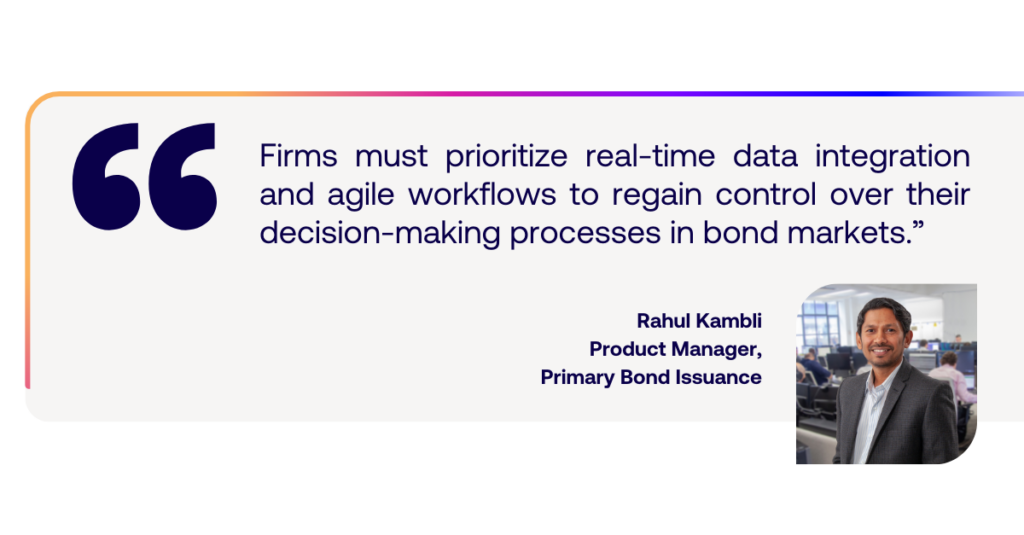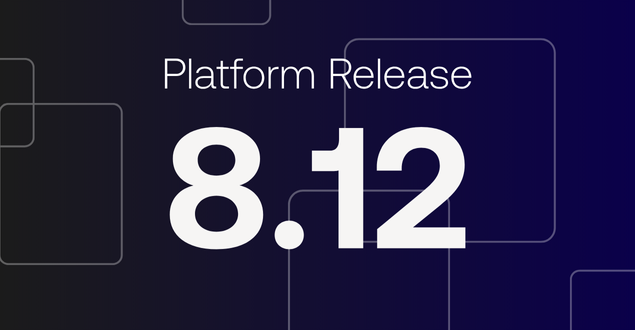
Why buy side firms need to get ahead of data silos in 2025
Data serves as the foundation of financial markets. In fact, global spending on financial market data reached $42 billion in 2023, a 12.4% increase from the previous year. This substantial expenditure indicates the sheer value that data brings to the industry. Data fuels decision-making, drives efficiency, and creates competitive advantages. But when that data is scattered and disconnected, it can become a roadblock rather than an asset. For professionals working in primary bond markets, whether Heads of Fixed Income Trading, Portfolio Managers, or Asset Managers, data fragmentation is a pressing challenge that complicates workflows, slows order building which disrupts decision-making and slows responses to the market.
The growing array of sources, vendor solutions and trading venues has led to an influx of data, and with it, an increase in inefficiencies. This blog explores the impact of data fragmentation on primary bond markets and provides actionable strategies for overcoming these challenges through agility and data integration to enable teams to make decisions in real time.

The importance of cohesive data
From primary bond market participants to be successful in this space they must make informed decisions on issuances quickly or risk missing key opportunities. And these decisions about issuances, including pricing, timing and allocation, hinge upon the availability of accurate, aggregated and real-time data. But this whole operation is made much more complex when the data is fragmented.
Data fragmentation
Data fragmentation occurs when critical information is dispersed across disparate platforms, systems or sources. Ultimately, this lack of cohesion obstructs operations by disrupting workflows and impacting cohesive decision making.
Fragmented data forces teams to waste valuable time navigating between multiple platforms to gather key insights. For instance, in a typical day, you may need to simultaneously analyze and consolidate issuance data from key market data feeds and communicate those to dealers in a matter of hours. Without an efficient, unified flow of information, these tasks become labor-intensive and error prone.
According to a recent analysis, the resulting delays in evaluating trades or analyzing market conditions can significantly impact the speed of execution, a critical factor in volatile markets.
Why accurate, real-time data is vital in primary markets
As we’ve discussed, scattered data and the resultant disrupted workflows, compromises decision-making efficiency and accuracy. Teams operating without consolidated data as a source of truth risk several consequences including missed opportunities from incomplete market visibility and compliance infractions caused by inconsistent or outdated information or indeed a chance of missing out on allocations as a result of slow communication to the market.
Having an accurate, real-time view of the data is vital as it equips teams with:
Comprehensive Market Visibility
Teams rely on access to real-time issuance data to assess market demand, track comparable issuances, and monitor prevailing market conditions. Disjointed or delayed data can lead to incomplete market analysis, which results in slow decision making.
Efficiency in Deal Evaluation
Regulatory Compliance
The solution? Agility, independence, and data consolidation
Overcoming data fragmentation doesn’t require more data; it requires better use of it. The answer lies in having an agile, independent solution to consolidate and normalize real-time issuance data. According to Coalition Greenwich, firms leveraging tech solutions to aggregate fragmented data observed reductions in combined transaction costs and notable efficiency gains across pre-trade, trade, and post-trade workflows.
So, while data fragmentation may currently burden primary bond markets, adopting tools that bring all relevant market information into a centralized hub can transform operational efficiency in primary bond markets.
And beyond operational efficiency, there are several other benefits of adopting an agile, integrated approach to overcome data fragmentation. For instance, having rapid access to high-quality data ensures teams act on insights ahead of competitors. Having clear audit trails can mitigate regulatory risks while easing the burden of compliance audits. And finally, consolidating and normalizing fragmented data streams helps to optimize the data’s value.
So, how should you go about fixing your fragmented data?

Building a resilient data strategy
By prioritizing real-time data integration and agile workflows, firms can regain control over their decision-making processes in bond markets.
Real-Time Data Integration
- Whether sourcing data from key data vendors, or via email, real-time integration allows firms to aggregate issuance data into a unified solution. This eliminates the noise of siloed information, creating a streamlined workflow focused on actionable insights to inform decisions.
Automation and transparency
- Leveraging solutions that normalize and synchronize disparate data sets can ensure consistency across different data sources. Advanced technology solutions allow data providers via electronic syndication networks to automate audit trails and enhance compliance readiness while ensuring teams work with high-quality datasets.
Real-time alerts and monitoring
- Enriched data solutions and real-time alerts enable trade professionals to respond to market prompts within fractions of a second. These capabilities empower trading desks to maintain an edge by identifying trends before the competition.
Collaborative workflows across teams
- Modern technology solutions are evolving to enable seamless collaboration, where teams can communicate within issue-specific chatrooms or leverage messaging tools for immediate alignment—all while maintaining compliance. These tools enhance agility and help align internal efforts, especially in fast-paced, high-stakes scenarios.

Now’s the time to fix data fragmentation
For Heads of Fixed Income Trading or frequent market participants, the question is not whether you can afford to fix data fragmentation, but whether you can afford not to.
Take the first step toward stronger data agility and independence by exploring integrated solutions for primary bond markets. By doing so, you’ll unlock the true potential of real-time data to drive informed trading strategies and optimize market engagement.










